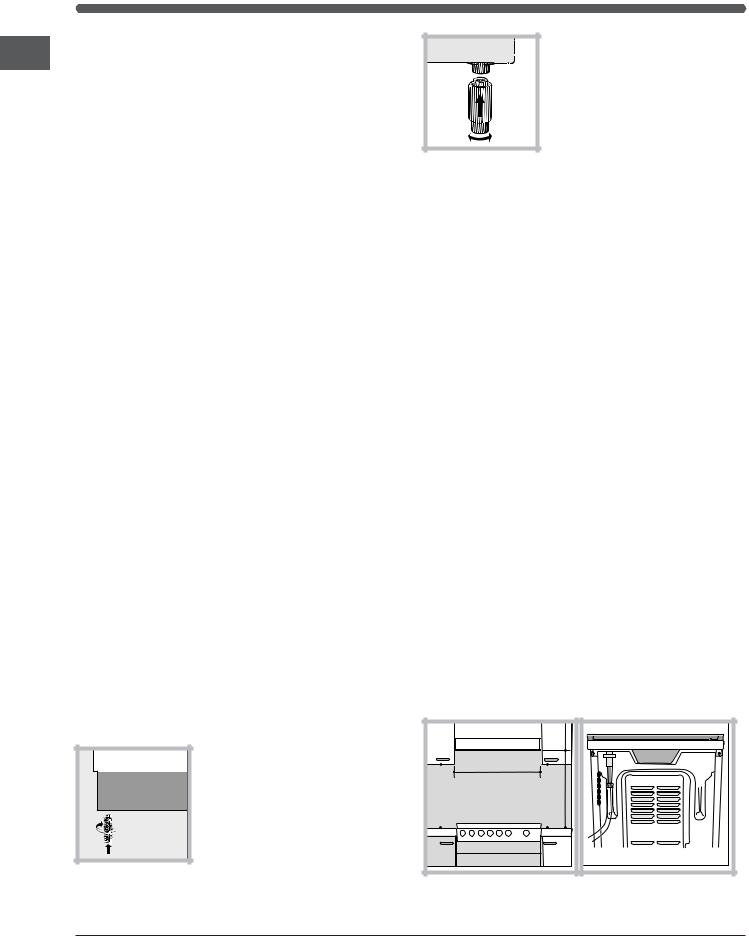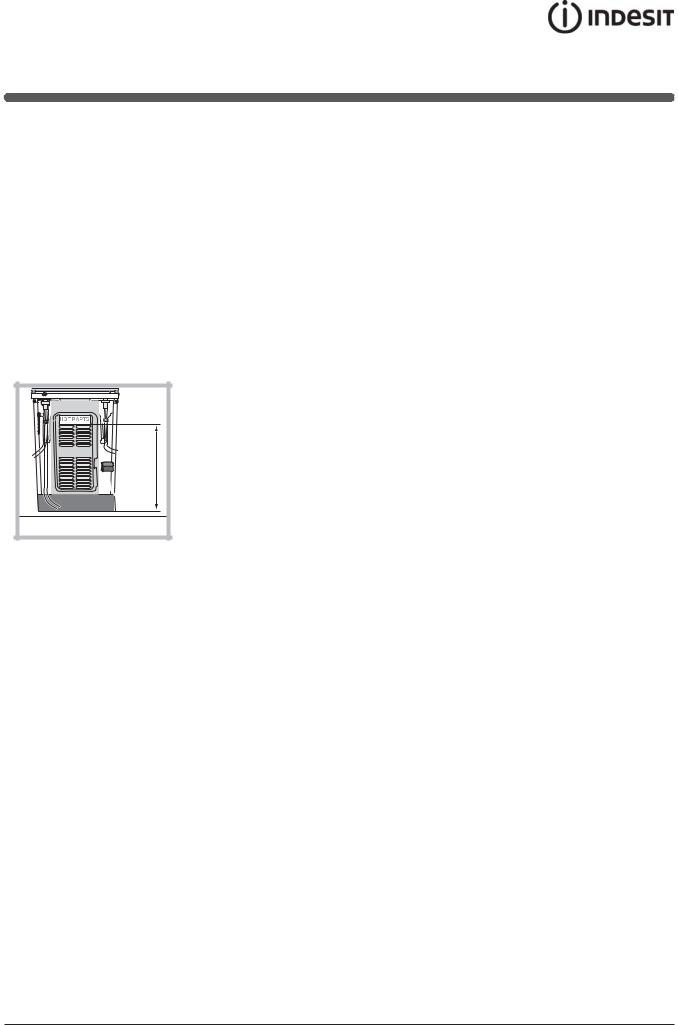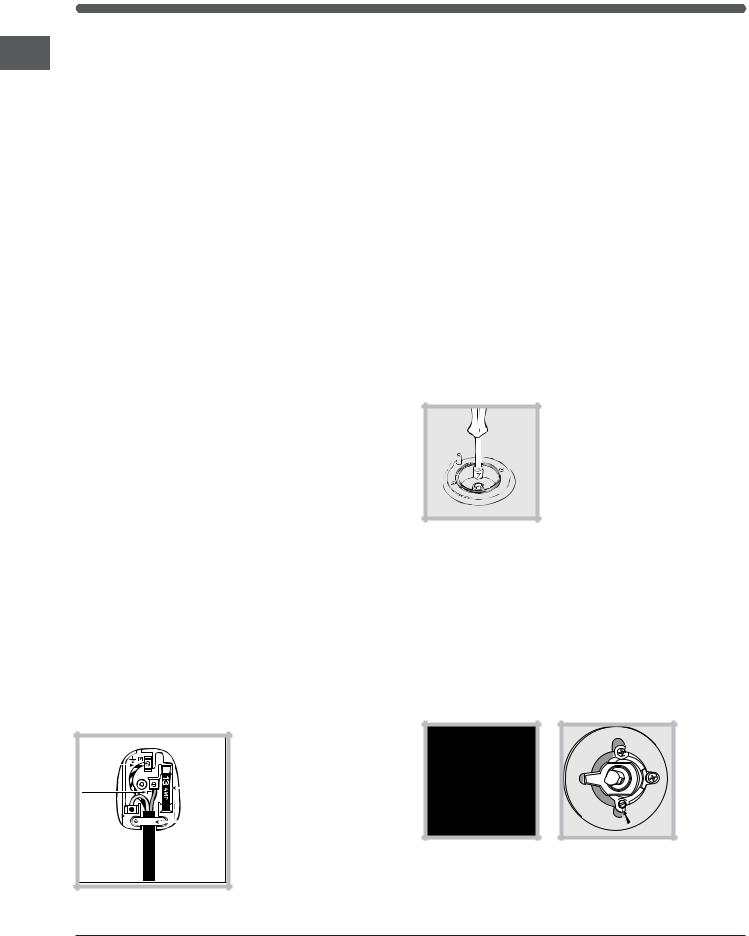Indesit K3G21G User Manual

Operating Instructions
COOKER
GB
English, 1
GB
Contents
Installation, 2-6
Positioning and levelling
Electrical connections
Gas connection
Adapting to different types of gas
Technical data
Table of burner and nozzle specifications
K3G2/G
K3G21/G
K3G21S/IR
K3G2S/G
Description of the appliance, 7
Overall view Control panel
Start-up and use, 8-10
Using the hob
Using the oven
Analogue timer
Oven cooking advice table
Precautions and tips, 11
General safety Disposal
Respecting and conserving the environment
Maintenance and care, 12
Switching the appliance off
Cleaning the appliance
Gas tap maintenance
Replacing the oven light bulb
Assistance

Installation
! Before operating your new appliance please read GB this instruction booklet carefully. It contains
important information concerning the safe installation and operation of the appliance.
!Please keep these operating instructions for future reference. Make sure that the instructions are kept with the appliance if it is sold, given away or moved.
!The appliance must be installed by a qualified professional according to the instructions provided.
!Any necessary adjustment or maintenance must be performed after the cooker has been disconnected from the electricity supply.
Positioning
! This unit may be installed and used only in permanently ventilated rooms according to the British Standards Codes Of Practice: B.S. 6172/B.S. 5440, Par. 2 and B.S. 6891 Current Editions. The following requirements must be observed:
a)The cooker should not be installed in a bed sitting room with a volume of less than 20m3. If it is installed in a room of volume less than 5m3 an air vent of effective area of 110cm2 is required, if it is installed in a room of volume between 5m3 and 10m3 a supplementary airvent area of 50cm2 is required, if the volume exceeds 11m3 no airvent is required. However, if the room has a door or a window which opens directly to the outside no air vent is required even when the volume is between
5m3 and 11m3.
b )During prolonged use of the appliance you may consider it necessary to open a window to the outside to improve ventilation.
c)If there are other fuel burning appliances in the same room, B.S.5440 Part 2 Current Edition, should, be consulted to determine the requisite air vent requirements.
Levelling |
If it is necessary to level the appliance, screw the adjustable feet into the places provided on each corner of the base of the cooker (see figure).
The legs* fit into the slots on the underside of the base of the cooker.
Installation of the cooker
The appliance can be installed next to furniture units which are no taller than the top of the cooker hob. The wall in direct contact with the back panel of the cooker must be made of non-flammable material. During operation the back panel of the cooker could reach a temperature of 50°C above room temperature. For proper installation of the cooker, the following precautions must be taken:
a)The appliance can be placed in a kitchen, dining room or bedsit, but not in a bathroom.
b )All furniture around the appliance must be placed at least 200 mm from the top of the cooker, should the surface of the appliance be higher than the worktop of this furniture. Curtains should not be placed behind the cooker or less than 200 mm away from the sides of the appliance.
c)Any hoods must be installed according to the requirements in the installation manual for the hoods themselves.
d )If the cooker is installed beneath a wall cabinet, the latter must be situated at a minimum of 420 mm above the hob. The minimum distance between the worktop and kitchen units made of combustible material is 700 mm (Fig. A).
e)The wall in direct contact with the back panel of the cooker must be made of non-flammable materials.
f ) The cooker is fitted with a safety chain that must be attached to a hook, secured to the wall behind the appliance.
! Some models can have their gas connection inverted. It is important to make sure the safety chain is always situated on the side which corresponds to the hose holder (Fig. B).
HOOD
|
Min. 600mm. |
min. 650 mm. with hood min. 700 mm. without hood |
Min. 420 mm. |
Min. 420 mm. |
|
|
|
Fig. A |
Fig. B |
|
2

Gas connection
T he cooker should be connected to the gas-supply by a corgi registered installer. During installation of this product it is essential to fit an approved gas tap to isolate the supply from the appliance for the convenience of any subsequent removal or servicing. Connection of the appliance to the gas mains or liquid gas must be carried out according to the prescribed regulation in force, and only after it is ascertained that it is adaptable to the type of gas to be used. If not, follow the instructions indicated in the paragraph headed “Adaptation to different gas types”. On some models the gas supply can be connected on the left or on the right, as necessary;
to change the connection, reverse the position of the hose
holder with that of the
cap and replace the
gasket (supplied with
the appliance). In the case of connection to
liquid gas, by tank, use pressure regulators that conform to the
regulation in force. The gas supply must be connected to the left of the appliance. Be sure that the hose does not pass through the rear of the cooker touching hot parts.
! Make sure the supply pressure conforms with the values shown in the table entitled “Caracteristics of the burners and nozzles”. When the cooker is installed between cabinets (recessed), the gas connection must be effected by an approved flexible hose with bayonet fitting (BS 669 Current Edition). The gas inlet for the cookers is a threaded G 1/2 gas female fitting.
Connecting the gas supply
To make the connection, a flexible hose should be used corresponding to the current gas regulations which are:
•the hose must never be at any point in its lenght in contact with the “hot” parts of the cooker;
•the hose must never be longer than 1,5 metre;
•the hose must not be subject to any tension or torsional stress and it must not have any excessively narrow curves or bottlenecks;
•the hose must be easy to inspect along its entire length to check its condition;
*Only available in certain models
• the hose must always be in good condition, never |
|
|
GB |
||
attempt to repair. |
||
! The installation must comply with gas safety |
|
|
|
||
(installation and use) regulations 1984. In all cases |
|
|
for the above, by low, a qualified, corgi approved |
|
|
engineer must be called for installation. |
|
Electrial connection
Power supply voltage and frequency: 230-240V a.c. 50/60 Hz.
! The supply cable must be positioned so that it never reaches at any point a temperature 50°C higher than the room temperature. The cable must be routed away from the rear vents. Should you require it, you may use a longer cable, however, you must ensure that the cable supplied with the appliance is replaced by one of the same specifications in accordance with current standards and legislation.
Your appliance is supplied with a 13 amp fused plug that can be plugged into a 13 amp socket for immediate use. Before using the appliance please read the instructions below.
WARNING - THIS APPLIANCE MUST BE EARTHED.
THE FOLLOWING OPERATIONS SHOULD BE CARRIED OUT BY A QUALIFIED ELECTRICIAN.
Replacing the fuse:
When replacing a faulty fuse, a 13 amp ASTA approved fuse to BS 1362 should always be used, and the fuse cover re-fitted. If the fuse cover is lost, the plug must not be used until a replacement is obtained.
Replacement fuse covers:
If a replacement fuse cover is fitted, it must be of the correct colour as indicated by the coloured marking or the colour that is embossed in words on the base of the plug. Replacements can be obtained directly from your nearest Service Depot.
Removing the plug:
If your appliance has a non-rewireable moulded plug and you should wish to remove it to add a cable extension or to re-route the mains cable through partitions, units etc., please ensure that either:
• the plug is replaced by a fused 13 amp rewireable plug bearing the BSI mark of approval.
or:
3

• the mains cable is wired directly into a 13 amp GB cable outlet, controlled by a switch, (in
compliance with BS 5733) which is accessible without moving the appliance.
! For appliances with a rating greater than 13 amp (eg: electric hob, double ovens and freestanding electric cookers etc.) the mains cable must be wired into a cooker output point with a rating of 45 amp. In this case the cable is not supplied.
Disposing of the plug:
Ensure that before disposing of the plug itself, you make the pins unusable so that it cannot be accidentally inserted into a socket. Instructions for connecting cable to an alternative plug:
! The wires in the mains lead are coloured in accordance with the following code:
Green & Yellow |
- Earth |
Blue |
- Neutral |
Brown |
- Live |
If the colours of the wires in the mains lead do not correspond with the coloured markings identifying the terminals in your plug, proceed as follows:
Connect Green & Yellow wire to terminal marked “E” or or coloured Green or Green & Yellow.
Connect Brown wire to terminal marked “L” or coloured Red.
Connect Blue wire to terminal marked “N” or coloured Black.
If a 13 amp plug (BS 1363) is used it must be fitted with a 13 amp fuse. A 15 amp plug must be protected by a 15 amp fuse, either in the plug or adaptor or at the distribution board. If you are in any doubt about the electrical supply to your machine, consult a qualified electrician before use.
How to connect an alternative plug:
The wires in this mains lead are coloured in accordance with the following code:
BLUE |
“NEUTRAL” (“N”) |
BROWN |
“LIVE” (“L”) |
GREEN AND YELLOW |
“EARTH” (“E”) |
GREEN &
YELLOW
13 amp fuse
BROWN
BLUE 

 CROSS-BAR CORD GRIP
CROSS-BAR CORD GRIP
Disposing of the appliance
When disposing of the appliance please remove the plug by cutting the mains cable as close as possible to the plug body and dispose of it as described above.
Checking the connection for leaks
When the installation process is complete, check the hose fittings for leaks using a soapy solution. Never use a flame.
Adapting to different types of gas
It is possible to adapt the appliance to a type of gas other than the default type (this is indicated on the rating label on the cover).
Adapting the hob
Replacing the nozzles for the hob burners:
1. Remove the hob grids and slide the burners off their
seats.
2. Unscrew the nozzles using
a 7 mm socket spanner (see
figure), and replace them with nozzles suited to the new type of gas (see Burner and nozzle
specifications table).
3. Replace all the components by following the above instructions in reverse.
Adjusting the hob burners’ minimum setting:
1.Turn the tap to the minimum position.
2.Remove the knob and adjust the regulatory screw, which is positioned inside or next to the tap pin, until the flame is small but steady.
! If the appliance is connected to a liquid gas supply, the regulatory screw must be fastened as tightly as possible.
3. While the burner is alight, quickly change the position of the knob from minimum to maximum and vice versa several times, checking that the flame is not extinguished.
4
